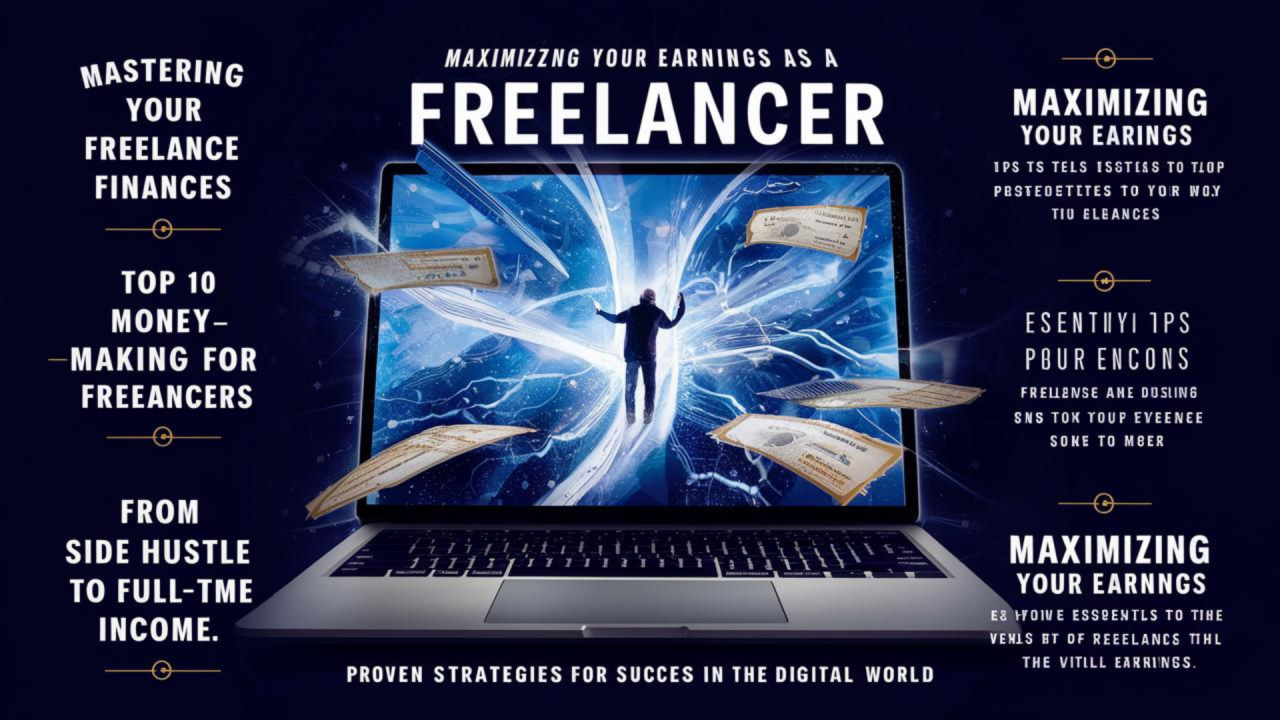If you’ve ever dreamed of working online, setting your own hours, and earning money from your skills, freelancing is your gateway. But what if you’re a beginner with no portfolio, no clients, and no experience?
Don’t worry, you can still start freelancing without experience and build a thriving career from scratch. Thousands of successful freelancers began exactly where you are now, all it takes is the right approach, consistency, and a willingness to learn.
This step-by-step guide will walk you through how to begin freelancing with zero experience, from identifying your skills to landing your first paying client.
1. Understand What Freelancing Really Is
Before you start freelancing, understand what it means to work as an independent professional.
Freelancing is simply offering your skills or services to clients on a project basis, rather than working full-time for one employer. Freelancers work across industries like writing, design, marketing, tech, and virtual assistance.
Common Freelance Jobs for Beginners:
- Content writing or copywriting
- Graphic design using Canva
- Data entry or transcription
- Video editing or short-form content creation
- Virtual assistance or social media management
💡 Example:
A student in Kenya started with basic data entry on Upwork. Within a year, she grew into a virtual assistant earning $1,200/month, all from skills learned online for free.
2. Identify Your Skills (Even If You Think You Have None)
Everyone has marketable skills, you just need to identify and package them.
Many beginners say, “I want to start freelancing but I have no skills.” The truth? You do — you just haven’t recognized them yet.
Ask Yourself:
- What do people often ask me to help them with?
- What tasks come naturally to me?
- What skills can I learn quickly online?
If you’re completely new, start with entry-level freelance skills like:
- Transcription (using tools like Otter.ai)
- Virtual assistance
- Content writing or proofreading
- Social media post creation
Free Resources to Learn Quickly:
- YouTube tutorials
- Coursera or Google Skillshop
- HubSpot Academy (for marketing & social media)
💡 Pro Tip:
Don’t wait to be an expert. Learn the basics, start small, and improve as you go. Freelancing rewards action, not perfection.
3. Choose a Freelance Niche
Specialization helps you stand out in a crowded market.
Instead of offering “anything,” pick a niche that combines your interests and demand. Clients pay more for specialists who solve specific problems.
Example Niches for Beginners:
- Blog writing for small businesses
- Pinterest management for influencers
- Video captioning for YouTubers
- Email copywriting for coaches
💡 Quick Summary:
Pick a niche → Build skills → Get known for one thing before expanding.
4. Build a Simple Portfolio (Even Without Clients)
You don’t need past clients to prove your skills, just show what you can do.
A portfolio helps clients trust you. If you’re just starting out, create sample projects instead.
How to Create a Portfolio Without Experience:
- Write sample blog posts, design mock graphics, or record short video edits.
- Use free tools like Canva, Google Docs, or Notion to display your work.
- Upload your portfolio to a free platform like Behance, Carrd, or LinkedIn.
💡 Example:
A beginner social media manager created fake Instagram posts for a “mock client.” Those samples landed her first $200/month contract.
5. Set Up Professional Profiles on Freelance Platforms
Your profile is your online résumé, make it shine.
Create freelancer accounts on trusted platforms:
- Upwork
- Fiverr
- Freelancer.com
- PeoplePerHour
- Toptal (for advanced freelancers later on)
Profile Optimization Tips:
- Use a professional headshot.
- Write a clear headline like “Virtual Assistant Helping Entrepreneurs Stay Organized.”
- In your bio, focus on what problem you solve for clients, not just what you can do.
💡 Pro Tip:
Include your main keyword (“freelancer,” “content writer,” “virtual assistant”) naturally in your profile description for better visibility.
6. Learn How to Write Winning Proposals
Even if you’re new, the right proposal can win you projects.
Most beginners lose jobs because they send generic proposals. Instead, personalize every message.
A Simple Proposal Formula:
- Greet the client by name.
- Address their problem (show you read the job post).
- Explain how you can solve it (give a short example).
- Add a call to action (e.g., “Can we schedule a quick chat?”).
💡 Example Proposal Snippet:
“Hi Sarah, I noticed you’re looking for someone to manage your Pinterest. I recently helped a small business grow their traffic by 50% in two weeks using organic pins. I’d love to do the same for you — can we chat this week?”
Even without experience, confidence and clear communication go a long way.
7. Start Small — Get Experience First
Small wins lead to big results.
Your first few jobs may not pay much, but they help you gain reviews, testimonials, and confidence.
Start With:
- Small tasks on Fiverr or Upwork
- Short-term gigs on microtask sites (Clickworker, Remotasks)
- Offering free work to build your portfolio (e.g., 1 free logo or article)
💡 Statistic:
Freelancers with at least 3 reviews earn 250% more than those with none, according to Upwork data.
8. Deliver Quality Work and Request Testimonials
Your reputation is your greatest marketing tool.
Once you get your first project:
- Communicate clearly and meet deadlines.
- Ask for feedback and a testimonial.
- Use positive reviews to attract more clients.
💡 Pro Tip:
Even one solid testimonial can turn your beginner profile into a trustworthy brand.
9. Learn to Price Your Services Smartly
Price your work based on value, not desperation.
At first, it’s okay to charge lower rates to attract clients, but don’t undervalue yourself for long.
How to Set Prices:
- Research competitors in your niche.
- Start with hourly or project-based rates (e.g., $10–$20/hr for beginners).
- Raise rates gradually as you gain experience and results.
💡 Example:
A content writer started at $15/article, improved skills over 3 months, and began charging $50/article after positive client reviews.
10. Build a Personal Brand Outside Platforms
Freelance platforms are great, but don’t rely on them forever.
Create your personal website or LinkedIn profile to showcase your work and attract direct clients.
Tips to Build a Freelance Brand:
- Share case studies or results on social media.
- Create content showing your expertise (blog posts, short videos).
- Network in Facebook groups, Reddit, and LinkedIn communities.
💡 Pro Tip:
Your name is your brand — show up consistently and provide value in your niche.
11. Learn Basic Business and Financial Management
Freelancing is a business — treat it like one.
Track your income, expenses, and savings from day one.
Tools to Help:
- Wave Accounting – free invoicing and bookkeeping.
- PayPal / Wise / Payoneer – receive global payments.
- Google Sheets – track monthly earnings.
💡 Example:
Freelancers who manage their finances properly earn 35% more on average (FreshBooks, 2024).
12. Keep Learning and Upskilling
Your value grows with your skills.
Freelancing is constantly evolving. The more you learn, the more you can charge.
Where to Learn:
- Skillshare or Udemy – for affordable online courses.
- YouTube – for practical tutorials.
- LinkedIn Learning – for certificates and career skills.
💡 Quick Summary:
Invest time in learning → gain confidence → raise rates → scale income.


